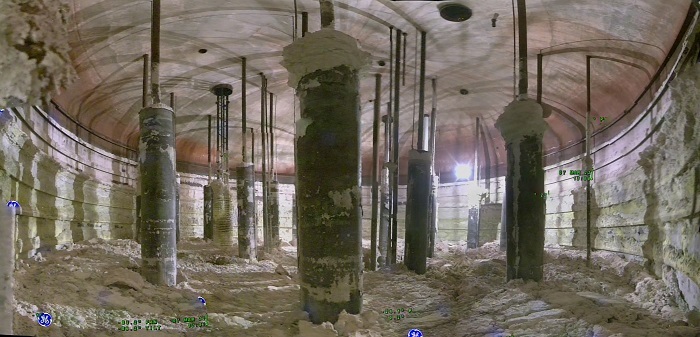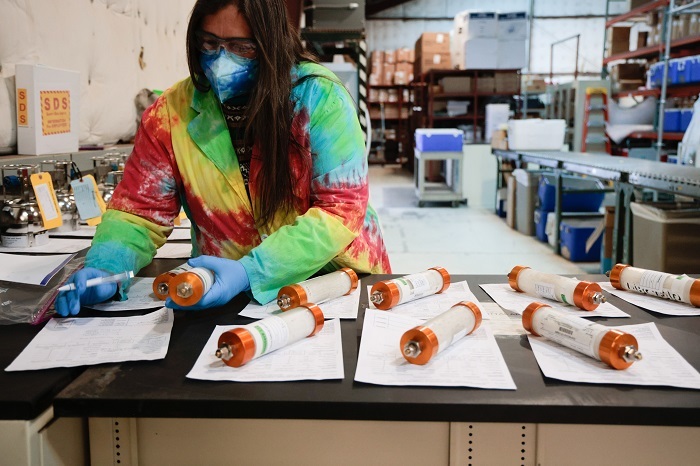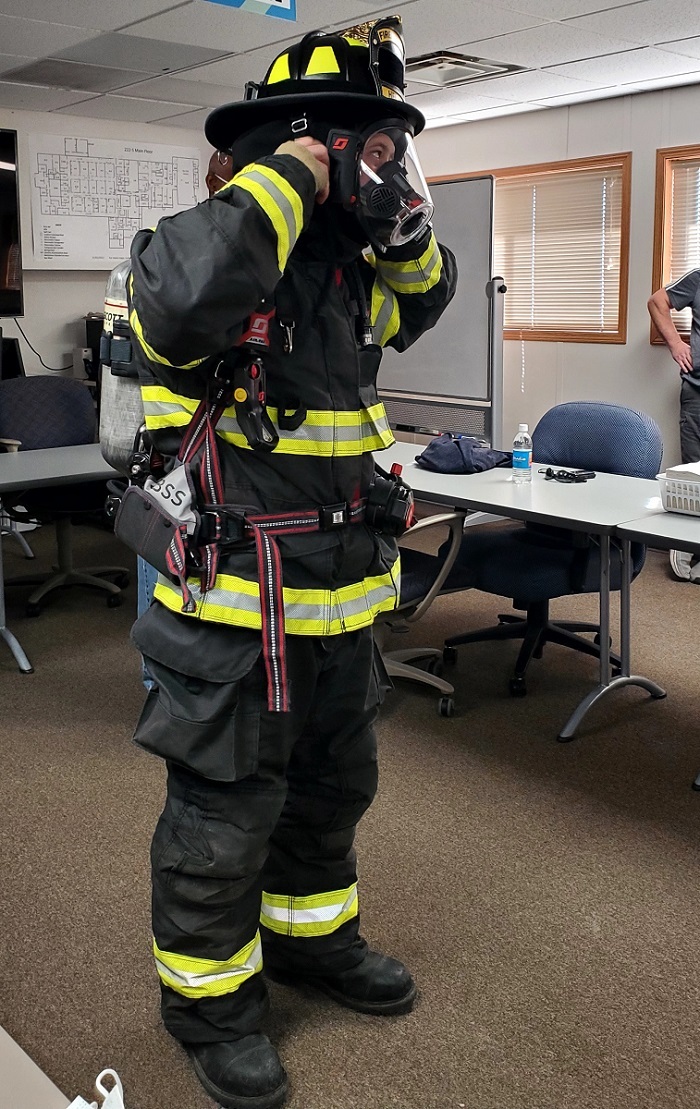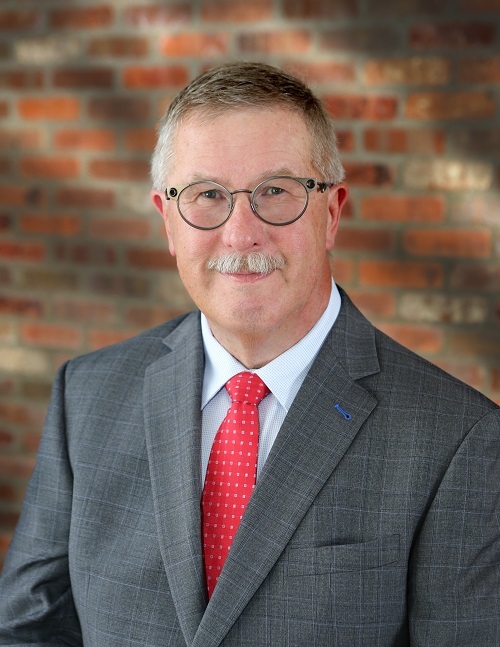 Waste retrieval from Tank AX-101, the last of four tanks to be retrieved in the Hanford Site’s AX Farm, is set to begin this fall. This in-tank photo shows the salt-based waste and the tank’s 22 air-lift circulators.
RICHLAND, Wash. – Tank by tank, batch by batch, the EM Office of River Protection (ORP) and tank operations contractor Washington River Protection Solutions (WRPS) are reducing risk to the environment by retrieving waste from the Hanford Site’s single-shell waste-storage tanks.
Less than five years after completing retrieval of waste in the last tank in the C Tank Farm, crews have completed field retrieval operations at three of the four tanks in AX Farm and are now installing retrieval equipment in the fourth, Tank AX-101. All the while, the team is implementing new tools and techniques to streamline the retrieval process and enhance safety.
“Moving waste from older single-shell tanks to newer double-shell tanks ensures continued safe storage until we send the waste to the Waste Treatment and Immobilization Plant for vitrification, or immobilization in glass,” said Delmar Noyes, ORP assistant manager for Tank Farms.
Tank AX-102 was the first tank to be retrieved in AX Farm. The tank is Hanford’s 18th single-shell tank to be retrieved. While field operations in Tanks AX-103 and AX-104 are complete, the tanks are still in the technical review process that is required before they can be added to the list of retrieved tanks.
Most recently, workers installed the first of three extended-reach sluicers in Tank AX-101 that will be used for waste retrieval. The sluicers break up and mobilize solid waste in the tank.
The retrieval plan is to use sluicing and high-pressure water technologies to remove approximately 320,000 gallons of salt-based waste and transfer the waste in batches to a double-shell tank for continued safe storage. Retrieval operations are scheduled to begin at Tank AX-101 this fall.
“We’re making tremendous progress in retrieving tank waste,” said Dave Carlile, who manages retrieval operations for WRPS. “We’ve got a talented team that demonstrates excellent teamwork and communication with a focus on doing the work safely. We use lessons learned from each retrieval project to develop plans for the next tank, and we improve our ability to anticipate and troubleshoot any issues we face along the way.”
 Crews safely remove legacy equipment from the Hanford Site’s A Farm to prepare for future waste retrievals.
While AX-Farm retrieval activities progress, workers continue to install the infrastructure to support future retrieval operations in A Farm, the next tank farm to be retrieved. Crews are hand-digging trenches and installing electrical systems.
Some of the most hazardous work is preparing tank pits for installation of retrieval equipment, such as pumps and sluicers, and associated equipment. The pits are located above tanks and provide access to the tank, pumps and monitoring equipment. Before they can clean out old pits, some of which have not been entered in 40 years, crews must remove old concrete covers. The crews perform video inspections and collect in-pit radiation level measurements to safely remove the large covers and allow workers to begin cleanout activities.
“In many cases, we don’t have good notes on the tank’s operational history, so we take a deliberate approach when entering tank pits to ensure worker safety,” said Gary Hopkins, construction manager for the WRPS retrievals organization. “Oftentimes we run into situations where we need to develop and deploy special tools to remove old, contaminated equipment to allow for pit cleanouts.”
Once removed by crane, the covers are packaged and shipped to the Environmental Restoration Disposal Facility, Hanford’s engineered landfill for disposal of low-level radioactive waste. Temporary steel plates are installed to cover the pits to support construction work. During retrieval, the steel covers and shield boxes are used to protect workers from radiation.
-Contributor: Mark McKenna
 Lisa Tower, a manager at the Newport News Nuclear BWXT-Los Alamos (N3B) Sample Management Office, inspects samples from a vapor plume that exists in soil beneath one of Los Alamos National Laboratory’s historical landfills, where hazardous materials were disposed and buried underground. N3B helped develop software functionalities that allow for faster and more comprehensive validation of results from such samples to assess the nature and extent of contamination in the environment.
LOS ALAMOS, N.M. – A significant software improvement is leading to enhanced decision-making on environmental cleanup at Los Alamos National Laboratory (LANL).
Samples collected of soil, sediments, water and other parts of the environment potentially contaminated by historical LANL operations now receive faster and more comprehensive validation due to software tool improvements made by the EM Los Alamos Field Office’s cleanup contractor Newport News Nuclear BWXT-Los Alamos (N3B).
The improved software functionality is part of a database containing all data associated with environmental cleanup at LANL. N3B implements the legacy portion of that cleanup on behalf of EM. The legacy cleanup involves the remediation of contamination from nuclear weapons production and research during the Manhattan Project and Cold War era.
The software improvement ensures more thorough validation of results from third-party analytical laboratories that analyze collected samples for various contaminants, which may include metals, radionuclides, high explosives, and human-made chemicals used in industrial solvents, known as volatile organic compounds.
The types of contaminants potentially found in these samples, along with levels of contamination, guide N3B’s cleanup.
“Decisions on the legacy environmental cleanup are based on the validity and quality of this analytical data, including the nature and extent of contamination, how much we clean up, and how well the interim measure is working to mitigate migration of the hexavalent chromium groundwater plume,” said Sean Sandborgh, sample and data management director at N3B. “If you have lapses in the quality of analytical data, that could have negative effects on our program’s decision-making capacity.”
Hexavalent chromium was flushed into Sandia Canyon between 1956 and 1972, when LANL personnel used the contaminant as a corrosion inhibitor in the cooling towers of its non-nuclear power plant. During that timeframe, chromium was used industry-wide for such purposes.
Once N3B personnel collect samples from potentially contaminated sites, they send them to a third-party laboratory for analysis. When N3B receives the results of those samples, they perform a validation process to demonstrate data is of sufficient quality and supports defensible decision-making.
“Validation consists of determining the data quality and the extent to which external analytical laboratories accurately and completely reported all sample and quality control results,” Sandborgh said.
The process can catch data quality issues that may result from incorrect calibration of equipment in a laboratory or issues inherent in the samples, such as improper preservation or temperature control, that mask detection of contaminants.
With the improved functionality, more of the validation process is automated, instead of manually conducted, which means a lower likelihood of errors.
Another important improvement is the ability to evaluate sample results containing radioactive material at lower activity concentrations, which provides quick information on the potential for low levels of radionuclide activity.
The improved functionality is also being used by LANL’s management and operating contractor, Triad, and will soon be used by the New Mexico Environment Department Oversight Bureau.
The software improvement saved N3B 265 hours of labor and more than $25,000 in taxpayer dollars since its launch nearly one year ago.
“The quality and defensibility of environmental data generated from sampling activities is a key component of an effective remediation process,” Sandborgh said. “When the automated data review is used in conjunction with manual examination of sample data packages, we meet and exceed our data quality requirements.”
-Contributor: Kate Keenan
 Hanford Site firefighter Chris Helms prepares to remove his gear during a training session with Hanford Laboratory Management and Integration, designed to give facility emergency response support personnel hands-on training.
RICHLAND, Wash. – Two EM prime contractors recently teamed up to provide hands-on training at the Hanford Site to increase safety and prevent contamination in the event of an emergency response.
Hanford Laboratory Management and Integration (HLMI) and Hanford Mission Integration Solutions (HMIS) launched a series of firefighter equipment “doffing,” or removal, training sessions at the site’s 222-S Laboratory for the lab’s emergency response personnel.
The sessions provided hands-on practice to train facility emergency response support personnel in quickly removing potentially contaminated personal protective equipment (PPE) from a firefighter without jeopardizing the firefighter’s well-being, while still controlling the spread of contamination. HLMI chemical technologists and health physics technicians primarily would perform this task if there were such an event at the 222-S Laboratory Complex.
“Successful performance of these emergency preparedness exercises develops the skills of the personnel involved as well as the coordination between site contractors necessary to safely complete the Hanford mission,” 222-S Laboratory Program Manager Jeff Cheadle said.
The doffing process begins once the firefighter exits a hot zone — an area where a direct and immediate hazard exists. This may require removing the firefighter’s PPE in a certain order or rapid manner depending on remaining air supply, medical well-being or other factors. The process requires strong teamwork and consistent communication between facility emergency response support personnel and the firefighter.
Due to the COVID-19 pandemic and an increase in new employees, HLMI identified the need for hands-on practice by its team members. This need was also echoed by HMIS, which operates the Hanford Fire Department.
“It’s been clear both organizations benefited greatly from these doffing sessions,” said Ranee Nankani, HLMI emergency management specialist. “Recognizing the need for additional doffing practice was the first step; everything else fell into place nicely. This would not have been possible or successful without the teamwork between both contractors.”
Feedback from session attendees has been positive and additional sessions are scheduled.
-Contributor: Tracie Arnold
CARLSBAD, N.M. – A subject matter expert on underground ventilation at the nation's only deep geologic repository has been recognized by the Society for Mining, Metallurgy & Exploration for his work to improve miner safety.
The society’s Health and Safety Division honored Kirk H. McDaniel of EM’s Waste Isolation Pilot Plant (WIPP) as the 2021 recipient of its Health and Safety Research and Education Excellence Award.
“We at CBFO consider ourselves to be very fortunate to have employees of the caliber of Kirk McDaniel on our federal staff,” CBFO Manager Reinhard Knerr said. “Kirk’s credentials and experience speak for themselves, and we congratulate him on this important award from his peers.”
 |
|
Kirk H. McDaniel, a subject matter expert on underground ventilation at EM’s Waste Isolation Pilot Plant, has received honors from the Society for Mining, Metallurgy & Exploration for advocating and promoting advanced technology research and development of the ‘Mine of the Future’ to reduce risks and improve miner safety. |
The award recognizes individuals who have exhibited outstanding dedication, leadership or heroism in exploration, mining and metallurgy occupational safety and health management. The society honored McDaniel for “advocating and promoting advanced technology research and development of the ‘Mine of the Future’ to reduce the risks and improve miner safety,” and for his long tenure as associate editor for the society.
McDaniel is a licensed professional mining engineer with almost 40 years of experience in underground mining and tunneling environments. From 1993 to 2002, he served as a senior engineer for the WIPP management and operations contractor. During that time, he was in charge of the mine ventilation system as a cognizant system engineer. He was also involved in the development of multiple first-generation technologies to support the WIPP mission. McDaniel returned to the Carlsbad Field Office as a federal employee in April 2021.
McDaniel holds a doctorate in mining and earth systems engineering from the Colorado School of Mines, with an emphasis on fire life safety and emergency preparedness in underground spaces. He has Bachelor of Science and Master of Engineering degrees in mining engineering from the school, as well as a Master of Business Administration from Regis University in Colorado. He is a certified mine safety professional and holds a U.S. Department of Labor Mine Safety and Health Administration blue card as a certified trainer for both surface and underground mines.
The international professional and technical society promotes the mining and extractive industries, with more than 13,000 members around the world. McDaniel has served the society in a variety of roles since 1981, including as a subcommittee member and panel chair.
|